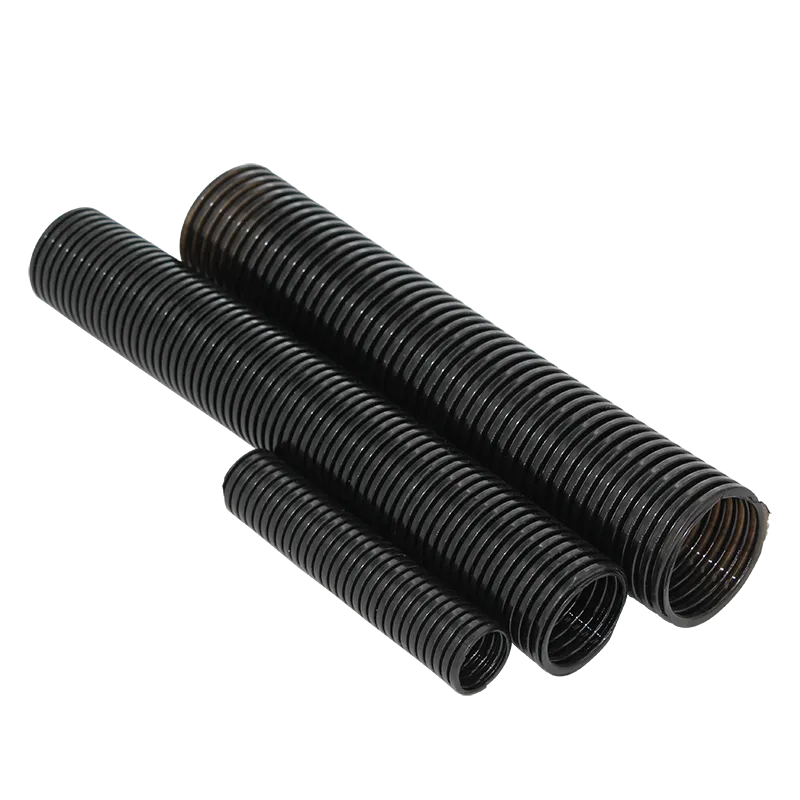polyethylene split loom
Understanding Polyethylene Split Loom A Key Component in Cable Management
In the world of cable management and protection, polyethylene split loom stands out as a vital solution for both professionals and DIY enthusiasts. This versatile product plays a crucial role in safeguarding wires and cables from environmental factors, abrasion, and potential hazards. In this article, we will explore what polyethylene split loom is, its benefits, applications, and reasons for its increasing popularity.
What is Polyethylene Split Loom?
Polyethylene split loom is a type of protective tubing made from high-density polyethylene (HDPE) material. Its notable design features a slit along its length, allowing it to easily wrap around multiple cables while offering the flexibility to add or remove wires as needed. This configuration provides an effective way to organize and shield cables, thereby reducing clutter and enhancing the overall aesthetic of any wiring job.
Benefits of Using Polyethylene Split Loom
1. Durability One of the primary advantages of polyethylene split loom is its robust nature. HDPE is known for its resistance to impact, chemicals, moisture, and UV rays, making it suitable for both indoor and outdoor applications. This durability ensures that the cables are well-protected over time, reducing the likelihood of damage and the need for costly replacements.
2. Flexibility The split design allows for easy installation and reconfiguration of wires. Users can quickly add or remove cables from the loom without having to disconnect any connectors. This feature is particularly beneficial in dynamic environments where wiring configurations are subject to change.
3. Safety By enclosing cables, polyethylene split loom minimizes the risk of electrical hazards, such as short circuits or exposure to high heat. It also protects cables from physical abrasion, which can occur in busy workplaces or during transport. This added layer of safety is essential in both residential and industrial settings.
polyethylene split loom

4. Aesthetic Appeal In addition to its protective qualities, split loom tubing enhances the overall appearance of cable arrangements. By concealing unsightly wires, it creates a cleaner and more organized look, which is particularly important in professional environments where presentation matters.
Common Applications
Polyethylene split loom is widely used across various industries, including automotive, electronics, construction, and telecommunications. In automotive applications, it protects wiring harnesses from heat and abrasion, ensuring reliable performance under the hood. In the electronics industry, it organizes and shields delicate wires, preventing damage from bending and flexing.
Moreover, the construction sector utilizes split loom to protect electrical wiring in buildings, while telecommunications companies use it for managing network cabling. Its versatility makes it an essential component in numerous projects that involve wiring.
Installation and Maintenance
Installing polyethylene split loom is a straightforward process. Users simply cut the desired length of loom, split it open, and wrap it around the cables. For added security, clamps or ties can be used to hold the loom in place. Maintenance is minimal; a periodic inspection for wear or damage is generally sufficient to ensure continued protection.
Conclusion
Polyethylene split loom is an indispensable element in effective cable management. Its combination of durability, flexibility, safety, and aesthetic appeal makes it a preferred choice in many sectors. As technology continues to advance and industries evolve, the importance of efficient and reliable cable protection will only increase. Embracing solutions like polyethylene split loom not only enhances safety and organization but also contributes to smoother and more efficient operations in any environment. Whether you’re a homeowner tackling a DIY project or a professional in an industrial setting, investing in polyethylene split loom is a smart choice that pays dividends in the long run.








